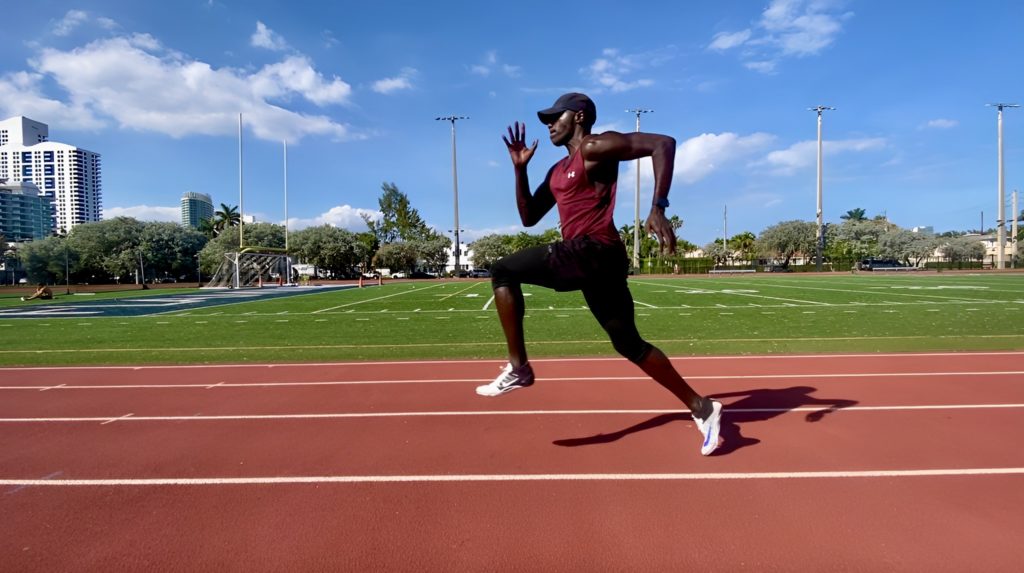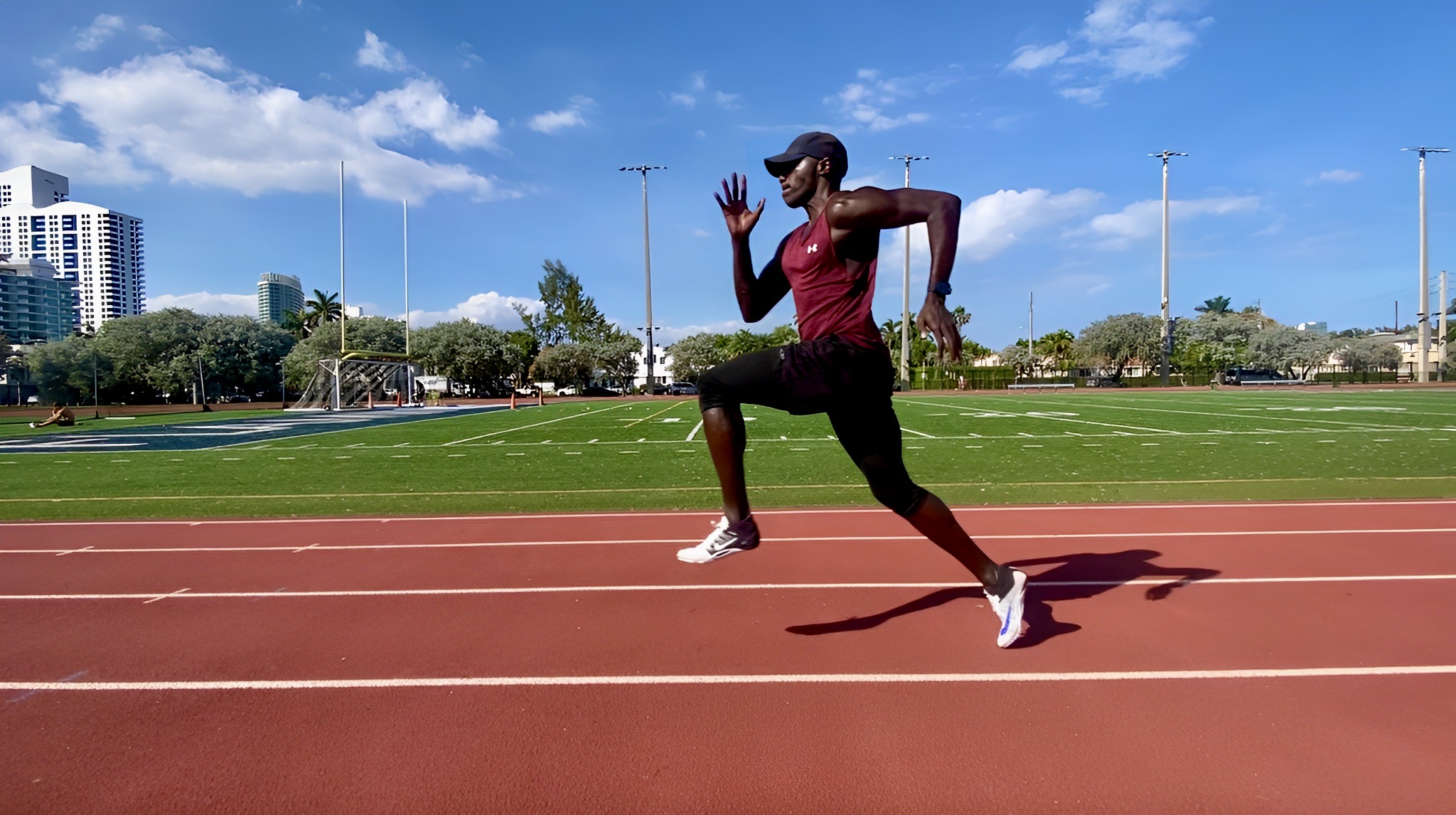In order to be a scholarship athlete you need to be able to come in and show potential early to be scoring points at the conference, regional, national or if your school doesn’t ave a track team you can compete in open meets as unattached athletes you will have to pay the entry fees to participate. Athletes are not require to be attached to an high school track team to aspire a college track and field scholarship. The athlete will have to run a targeted time and reach the academic requirements set by the college to obtain that coveted scholarship.
College track scholarships are awarded to athletes by the coaching staff of each program. Each year coaches evaluate their team’s needs and use their scholarships to award their top performing athletes as well as try and attract new athletes. For this reason, most scholarships are partial scholarships as coaches are dividing their track scholarships up to attract several top athletes.

Despite what you may think, track scholarship recruiting isn’t all about your best time. Each event is recruited and scouted differently, and it is important you know how coaches recruit for your events to maximize your chances of landing a track scholarships, so The best thing you can do is contact the coaches staff and ask them what it takes to make their team and possibly earn a college track scholarship at their program. Most track coaches will be very upfront about what time or mark you will need to make their team and to get a scholarship.
How each event get’s recruited
SPRINTS
Every track and field program is on the lookout for an elite level sprinter who shows an ability to be good over multiple events. In college, sprinters will run anywhere from the indoor 60 meters to the 200 meters and might be asked to step up to the 4 X 400 meters if the program needs it. Because a good sprinter can score for you in multiple events, they are going to demand the most track scholarship money.
Scouts are always looking for young talented sprinters with excellent natural ability. You don’t have to have the best form if you are fast, the right program can develop your form.
MIDDLE DISTANCE
The middle distance events are seeing the most change at the college level. Increasingly, you are seeing strong 400-meter runners pushing to the 800 meters and some of the elite 800-meter runners taking their great turnover up to the 1,500 meters. Most middle distance track scholarship runners will be asked to run cross country as well, and this added base to your training means you can probably step up distance on the track as well. This means you have to be willing to try different events at the college level if you are a middle distance runner. If you are looking for a scholarship, you need to show an ability to contribute points in multiple events.
Scouts look for strong runners with a good biomechanics and top-end speed. College coaches can then plug you into their program, and you will develop into a college runner.
DISTANCE
Every college distance runner will be asked to run XC as well as indoor and outdoor track. It is a full-time job and then some to make the jump to being a college distance runner. When recruiting, runners’ coaches are looking at how you train in high school and whether your biomechanics and running style will fit their training program. Track scholarships are available to the runners who score points for both the XC and track teams.
Scouts are looking for runner who can handle the added distance in training and who have the ability to score in multiple events. That means you could be asked to run anything from the 800 meters to the 10K if your team needs the points.
NCAA Eligibility Requirements
Your academic eligibility is determined using a combination of your high school graduation, GPA from your core courses and your SAT or ACT test scores.
1 – You must graduate from high school
2 – You must meet the minimum GPA in your core courses
3 – You must meet the minimum requirements on your SAT or ACT test scores.
4 – Your GPA and SAT/ACT test scores must combine to meet the minimum requirements laid out on the sliding scale. More information
How good do you need to be to get a track scholarship?
Men’s Track and Field
| EVENTS | NCAA DI | NCAA DII | NCAA DIII | NAIA |
| 55m IN | 6″32 – 6″70 | 6″35 – 7″20 | 6″78 – 7″20 | 6″52 – 7″20 |
| 60m IN | 6″61 – 7″10 | 6″65 – 7″40 | 6″92 – 7″40 | 6″81 – 7″50 |
| 55m hurdles | 7″4 – 7″9 | 7″65 – 8″1 | 8″0 – 8″2 | 8″0 – 8″2 |
| 60m HH IN | 7″75 – 8″00 | 7″89 – 8″50 | 8″29 – 8″50 | 8″21 – 8″50 |
| 300m IN | 33″94 – 35″80 | 34″99 – 37″90 | 36″78 – 39″00 | 34″99 – 39″00 |
| 500m IN | 1’05’58 – 1’08″98 | 1’07″45 – 1’10″33 | 1’10″01 – 1’13″56 | 1’09″56 – 1’12″45 |
| 600m IN | 1’21″08 – 1’24″67 | 1’22″34 – 1’28″45 | 1’27″55 – 1’30″55 | 1’23″44 – 1’25″65 |
| 1000m IN | 2’28″55 – 2’32″44 | 2’31″33 – 2’37″44 | 2’38″43 – 2’42″44 | 2’32″32 – 2’38″66 |
| 3000m IN | 7’54″15 – 7’59″44 | 7’54″22 – 8’00″55 | 8’00″44 – 8’14″66 | 8’15″55 – 8’30″32 |
| 11om HH | 13″75 – 14″50 | 14″13 – 15″30 | 14″51 – 16″50 | 14″62 – 15″55 |
| 300m IH | 35″92 – 38″50 | 38″02 – 43″00 | 39″67 – 44″00 | 40″55 – 45″00 |
| 400m IH | 50″58 – 56″00 | 52″76 – 60″00 | 53″39 – 63″00 | 54″87 – 60″00 |
| 100m | 10″13 – 10″90 | 10″44 – 11″20 | 10″65 – 11″40 | 10″68 – 11″30 |
| 200m | 20″87 – 22″20 | 21″90 – 23″00 | 22″34 – 24″50 | 22″02 – 23″00 |
| 400m | 45″68 – 49″90 | 47″09 – 52″00 | 48″61 – 54″00 | 48″82 – 52″00 |
| 800m | 1’47″58 – 1’55” | 1’52″53 – 1’57” | 1’54″32 – 1’58″44 | 1’55″31 – 1’58” |
| 1,500m | 3’36″42 – 4’03″56 | 4’04″19 – 4’25″33 | 4’07″34 – 4’20″66 | 4’02″45 – 4’16″44 |
| 1,600m | 4’04’23 – 4’23″44 | 4’12″34 – 4’33″66 | 4’17″45 – 4’42″55 | 4’12″33 – 4’39″56 |
| 3,000m Steeplechase | 8’49″29 – 9’50” | 9’32″44 – 10’15” | 9’19″05 – 10’30” | 9’38″5 – 10’30” |
| 3,200m | 8’47″75 – 9’30″43 | 8’59″34 – 9’45″56 | 9’23″56 – 10’13″44 | 9’09″45 – 10’01″66 |
| 5000m XC | 14’20” – 16’05” | 15’50” – 16’30” | 17’00” – 17’30” | 16’12” – 17’00” |
Woman’s Track and Field
| EVENTS | NCAA DI | NCAA DII | NCAA DIII | NAIA |
| 55m IN | 6″95 – 7″35 | 7″25 – 7″75 | 7″90 – 8″25 | 7″40 – 8″00 |
| 60m IN | 7″31 – 7″85 | 7″30 – 8″50 | 7″80 – 8″50 | 7″68 – 8″50 |
| 60m HH IN | 8″16 – 8″80 | 8″36 – 10″0 | 8″95 – 10″20 | 8″93 – 10″0 |
| 300m IN | 39″20 – 41″05 | 40″00 – 42″32 | 42″03 – 45″00 | 40″07 – 44″00 |
| 500m IN | 1’15″94 – 1’18″45 | 1’17″44 – 1’20″45 | 1’22″56 – 1’25″44 | 1’19″67 – 1’22″93 |
| 600m IN | 1’34″31 – 1’36″54 | 1’35″23 – 1’39″34 | 1’38″67 – 1’44″33 | 1’39″23 – 1’42″34 |
| 3000m IN | 9’18″54 – 9’23″45 | 9’19″56 – 9’29″44 | 9’28″60 – 10’00 | 10’26″69 – 10’37″00 |
| 100m HH | 13″12 – 14″70 | 14″18 – 15″60 | 14″26 – 17″50 | 14″56 – 17″50 |
| 300m IH | 41″80 – 45″70 | 44″39 – 48″00 | 47″56 – 49″50 | 45″66 – 48″50 |
| 400m IH | 57″15 – 65″50 | 60″99 – 67″00 | 62″45 – 75″00 | 64″03 – 75″00 |
| 100m | 11″23 – 12″20 | 11″90 – 12″80 | 12″12 – 13″20 | 12″03 – 13″50 |
| 200m | 23″00 – 25″40 | 23″90 – 26″50 | 24″58 – 28″50 | 24″57 – 28″00 |
| 400m | 52″06 – 58″50 | 54″88 – 63″00 | 56″72 – 67″00 | 56″14 – 62″50 |
| 800m | 2’04″18 – 2’15” | 2’06″99 – 2’27” | 2’10″65 – 2’32” | 2’15″21 – 2’25” |
| 1,500m | 4’13″30 – 5’15” | 4’30″45 – 5’18” | 4’40″76 – 5’20” | 4’39″74 – 5’15” |
| 1,600m | 4’39″32 – 5’23” | 5’03″44 – 5’45” | 5’05″67 -6’00” | 5’01″44 – 5’47” |
| 3,200m | 10’08″11 – 11’32” | 10’29″45 – 12’00 | 10’35″67 – 12’30” | 10’26″69 – 12’00 |
| 5,000m XC | 16’53” – 18’50” | 17’59” – 19’45” | 21’12” – 32’00 | 18’23” – 22’04” |
| 3,000m Steeplechase | 10’07″99 – 12’00 | 11’23″87 – 12″50″ | 11’39” – 12’30” | 11’49″25 – 12’25” |
NCAA D1 Track and Field
This is the top level of college track and field. The athletes that are competing here are among the best in the world. For many athletes just competing at this level never mind getting a scholarship can be a tremendous accomplishment. It is always good to have a couple D1 schools on your list but if your times or marks don’t match up to the athletes currently on the team you might need to look at the other division levels.
NCAA D2 Track and Field
Many of the athletes at the NCA D2 level have the times or ability to make the team at the D1 level but choose D2 because they can get a better scholarship package and be more competitive. This doesn’t mean the competition level is low, in fact the winning times and marks at D2 are often very close to the D1 times. The biggest difference is the depth of talent. If you are a fringe D1 athlete, you can compete at the D2 level and be much more competitive and probably get a bigger scholarship.
NCAA D3 Track and Field
Without the ability to offer athletic scholarships many people feel that D3 sports and track and field in particular are among the purist forms of competition. Athletes at this level could compete at the D2 level but have chosen D3 usually because the school is a better fit for them. If your times match up with D3 times, take the opportunity to get to know the some of the schools. You can search for NCAA D3 colleges here. You might find the perfect fit for continuing your track and field career while getting your degree.
NAIA Track and Field
For a long time people thought NAIA and D3 schools were the same levels of competition. Over the last few years NAIA track and field has started to show they are much more competitive and actually close to the D2 caliber of athletes. If you are looking for schools in the Mid-West or Southern parts of the US, look at the NAIA level.
Junior College Track and Field
The junior college level has a very wide range of talent in track and field. Some athletes are at the Junior College level because they are academically ineligible to be at the D1 level. Other athletes didn’t quite have the times or marks to move straight on to a four year school so they are at a junior college working to improve and move on after a couple years. Scholarships can be hard to find at this level because many programs aren’t fully funded or if they are, they are restricted in how they can use their scholarships. You will need to check with each program and coach to see what opportunities are available.
How to find an open meet and run unattached?
In order to be a scholarship athlete you need to be able to come in and show your potential at the conference, open meets, regional or national level.
DirectAthletics Collecting entries online for track & field or cross country meets. Thousands of meets use Direct Athletics to collect entries every year. A wide variety of events use DA, from very large meets like the Texas Relays to high school dual meets. Our entry system can be configured to the specific needs of your event.
Flrunners has the latest Florida high school running, cross country, and track & field coverage. Get rankings, race results, stats, news, photos and videos and check the year calendar for the next upcoming meets in Florida by just filter out the meet you looking for.
How to contact a University you like
No track recruiter contacted you yet! No worry, requiters are not able to see and recuites all young talent, anyway. Some time you have to push your luck a little, and contact them yourself. And most of the time it payed off.
To contact a university or college track coach, it’s quite simple. The best way to do it is to contact the coach directly. To do so, you have to Google the university name on internet, then go to the university’s website and searching for the words “athletics directory” once there, scroll down to the “track & field” section.
Then, when you found it, you will be able to see a single or several coach in that section, like “Head Coach, Assistant Coach, Interim Head Coach, or Director or track and field”.
Choose the one you want by clicking on his/her name, you will re-direct to their profile page, which gather all the information you need to contact them, which their full name, direct phone number and email address, You are set to go.

